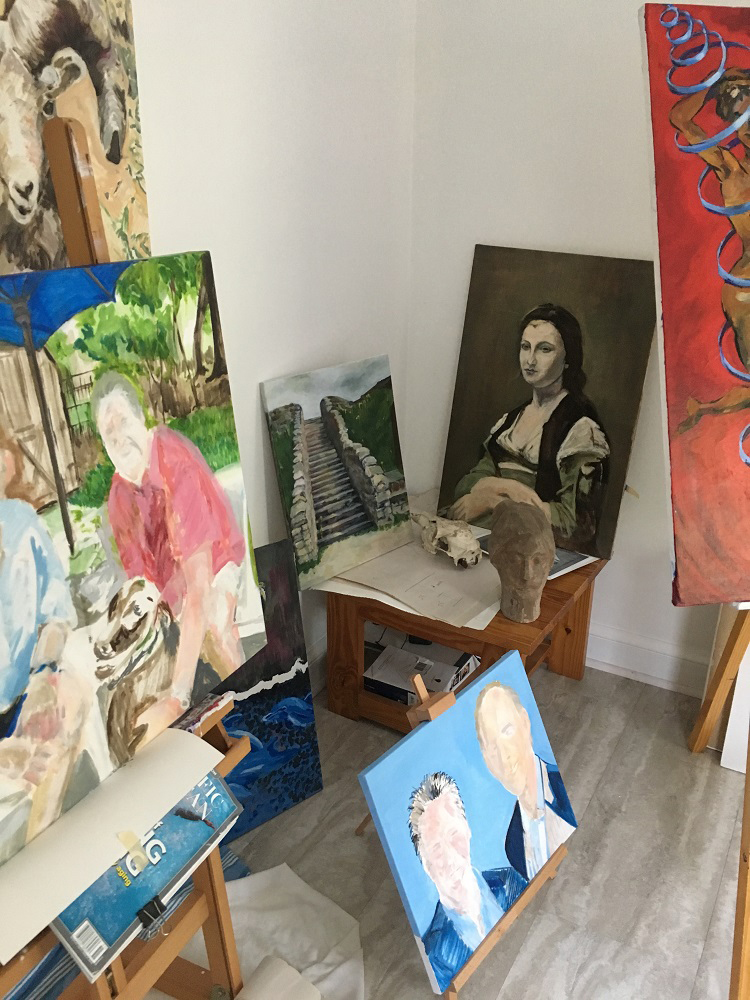https://www.youtube.com/shorts/xOA7dKSThWY Hey! Welcome to my fourth entry at MC Voices, today I will be showing…

There are two very opposite schools of thought on whether or not Art can be taught. This post will present both arguments:
Yes it can. Art is a discipline like any other. No one expects someone to sit down at a piano and start playing a complicated piece of music without instruction. The student first learns how to read music, how to identify those little dots on a page with a specific key on the piano, and how to execute scales. Lots of scales. Scales limber up the fingers, scales force both hands to work together, scales get more intricate as you go along. It’s the same with Art. No one picks up a canvas and brushes and immediately creates a museum masterpiece. The student learns first how to HOLD a pencil (really!), then how to use it to make marks on paper, then how to draw cubes, spheres, cones. Then the student learns how to compose a page, how to create the illusion of volumetric forms, how to contrast light and shade, how to use color. A foundational art course of study is based on the ‘ateliers’ of the Renaissance. But what are the professors here at Montgomery College really teaching? How to see. How to interpret the visual world. How to render realistically. How to render abstractly. How to use the tools and techniques available to the artist in traditional and non-traditional ways. How to get so familiar with the materials that an artist can use them flawlessly when needed to create Art from an idea, a concept or an impression.
No it can’t. Art can’t be taught, a person is either born with talent or without. Modern art schools only do two things: (1) take money from untalented students and convince them that they can become artists; and, (2) persuade these same students to get an advanced Art degree, give them a job teaching, and thus make them into non-artists. Art schools don’t make artists. Mediocre images is accepted and displayed on school walls right alongside the truly good ones. Everyone can now create Art. All you need is a smartphone, and you’re a photographer! All you need is a couple pieces of metal and a soldering iron and you’re a sculptor! All you need is a can of spray paint and you’re a mural painter! So, forget about learning the fundamentals, they don’t apply anymore — just get out there and make Art. Anything goes!
In conclusion, as you probably realize, I believe that fundamental Art skills and techniques can definitely be taught!
That’s where the Montgomery College art programs at the Takoma Park/Silver Spring campus come in. This semester I’m taking Figure Drawing with Professor Hunter who really understands how important it is to start with simple line drawings of the contour of the figure, followed by structure and volumetric studies, and then add value and pay attention to negative space. They are the same lessons that were taught during the Renaissance. Each class builds upon earlier lessons. And the models are first class; they are true professionals who work as hard as the students do. To me, this class is the foundation of everything I do in Art.



This is a great post Arleen! It sounds like art really can be taught and is taught at MC!
Hi Brady. Thanks for your comments. Yes, I do think that Art can be taught, and that MC is doing a good job of it. Learning the basic, fundamental skills are so important in every academic setting; there are no shortcuts to this kind of knowledge and experience. Arleen
Good testimonial, Arleen! And thanks for the mention. Here’s a quote I copied recently which supports your Yes position, as well as my occasional comparison of fine art and drawing to other disciplines:
Truman Capote said, “To me, the greatest pleasure of writing is not what it’s about, but the inner music that words make.” He also said: “Writing has laws of perspective, of light and shade just as painting does, or music. If you are born knowing them, fine. If not, learn them. Then rearrange the rules to suit yourself.”
Thanks so much for your great comments, Professor Hunter. There are so many parallels amongst the various art forms, especially in music and writing. We can only hope that people approach fine art, in whatever form, with the time and attention it deserves.
Dream never dies. Follow your dream. Go Arleen!
So true, Linda. A good dream just gets stronger and with Art, color is added! Keep up the drawing, you are making great progress. Arleen
Thanks for the encouragement!